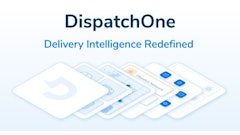
Nearly 57% of retailers have outsourced their delivery networks over the past five years, yet 84% of retailers claim their organization needs more control over their outsourced delivery networks, according to a new FarEye report, conducted with Researchscape International.
Outsourced delivery networks yield lower cost, faster delivery and increased capacity, however sacrifice control over order tracking and a branded consumer experience. The trend for retailers to outsource their delivery networks contrasts with the fact that only 27% of retailers are using one last-mile delivery platform yet 72% believe it is extremely or very beneficial to merge all technology solutions into one platform, offering a single view, more agility, control and lower cost.
“For retailers that do not have the scale for their own fleet of drivers, outsourcing their delivery networks is the most cost-effective way to deliver with flexibility, however, the tradeoff is less control,” says Stephane Gagne, VP, product, FarEye. “Rather than outsource their entire last-mile logistics network, retailers should consider having their own last-mile platform that would provide them the flexibility to experiment with different hybrid multi-carrier approaches, outsourcing in some markets, and insourcing in others. This would offer the level of control and visibility they are after, while retaining a superior consumer experience.”
From BusinessWire:
- Last-mile delivery is expensive, accounting for 53% of overall shipping costs. Fifty-five percent of retailers surveyed are focused on reducing cost of delivery over the next five years, in addition to increasing customer satisfaction (53%) as their Top 2 priorities.
- The top factors contributing to the high cost of last-mile delivery include: fuel (59%), address location (39%), labor (36%) and first delivery failure (34%). The speed to deliver is a contributing factor as only 44% of retailers reported that all or almost all of their deliveries are made on-time today, however, retailers have a goal of increasing that rate to nearly 70% in 2027. In addition, 35% of retailers reported offering same- or next-day delivery now, and 64% aim to offer it by 2027.
- 66% of retailers expect their budgets for last-mile delivery technology to grow over the next five years, and 78% of retailers claim they will likely change or buy a new last-mile delivery solution in the next 1-2 years. Forty-eight percent of retailers expect to buy a last-mile delivery platform in the next five years vs. building their own in-house.
- By 2027, retailers plan to expand their carrier fleets to be more sustainable. Sixty percent of EMEA and APAC respondents and 40% of U.S. respondents planned to use electric vehicles in their fleets in the next five years. Autonomous vehicles are a priority for 43% of APAC respondents, 25% for U.S. and 20% for EMEA respondents, and drones were a priority for 34% of APAC respondents, 29% of EMEA respondents and 22% of U.S. respondents, over the next five years.

![Pros To Know 2026 [color]](https://img.sdcexec.com/mindful/acbm/workspaces/default/uploads/2025/08/prostoknow-2026-color.mduFvhpgMk.png?auto=format%2Ccompress&bg=fff&fill-color=fff&fit=fill&h=100&q=70&w=100)








![Pros To Know 2026 [color]](https://img.sdcexec.com/mindful/acbm/workspaces/default/uploads/2025/08/prostoknow-2026-color.mduFvhpgMk.png?ar=16%3A9&auto=format%2Ccompress&bg=fff&fill-color=fff&fit=fill&h=135&q=70&w=240)







